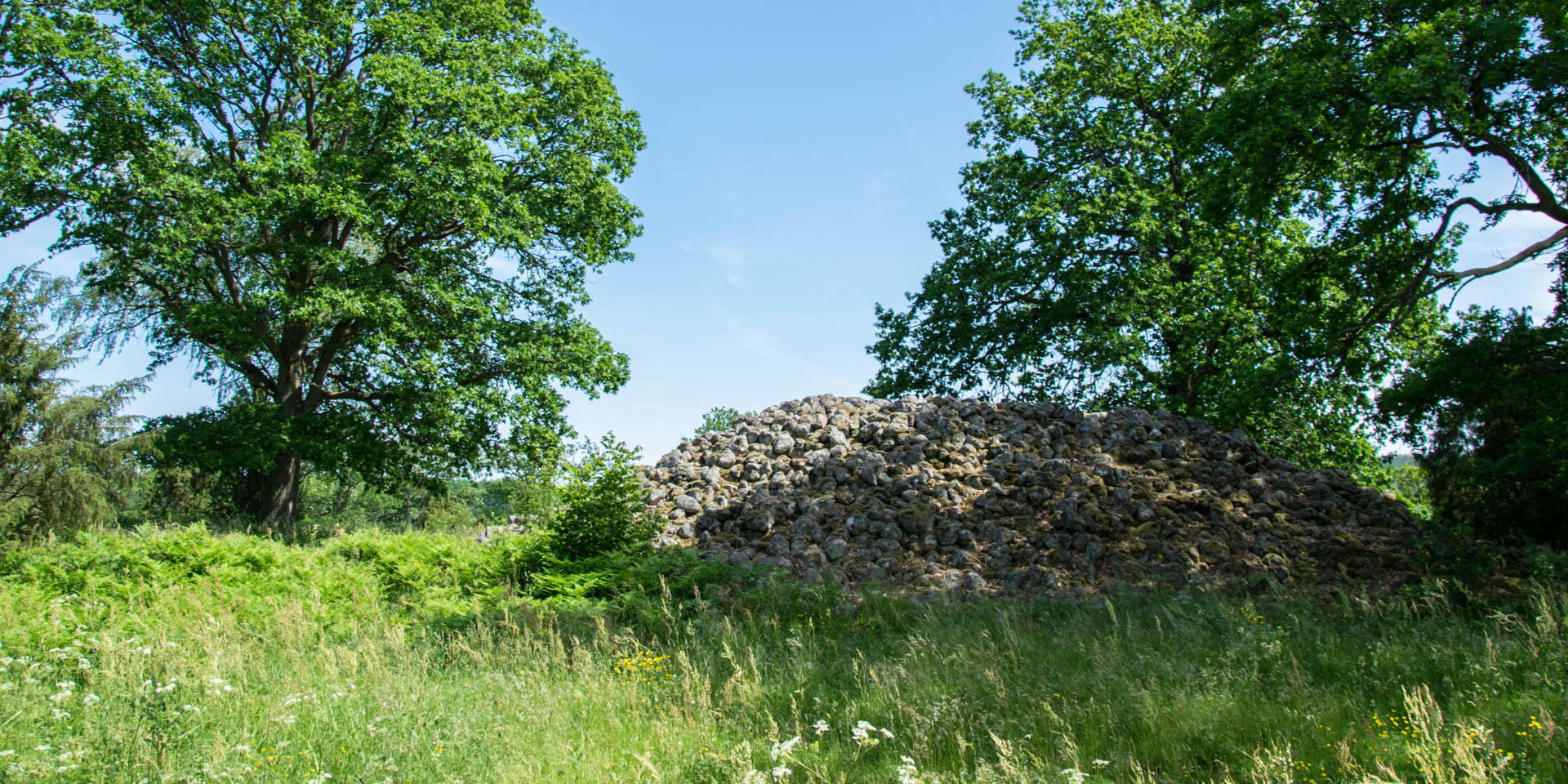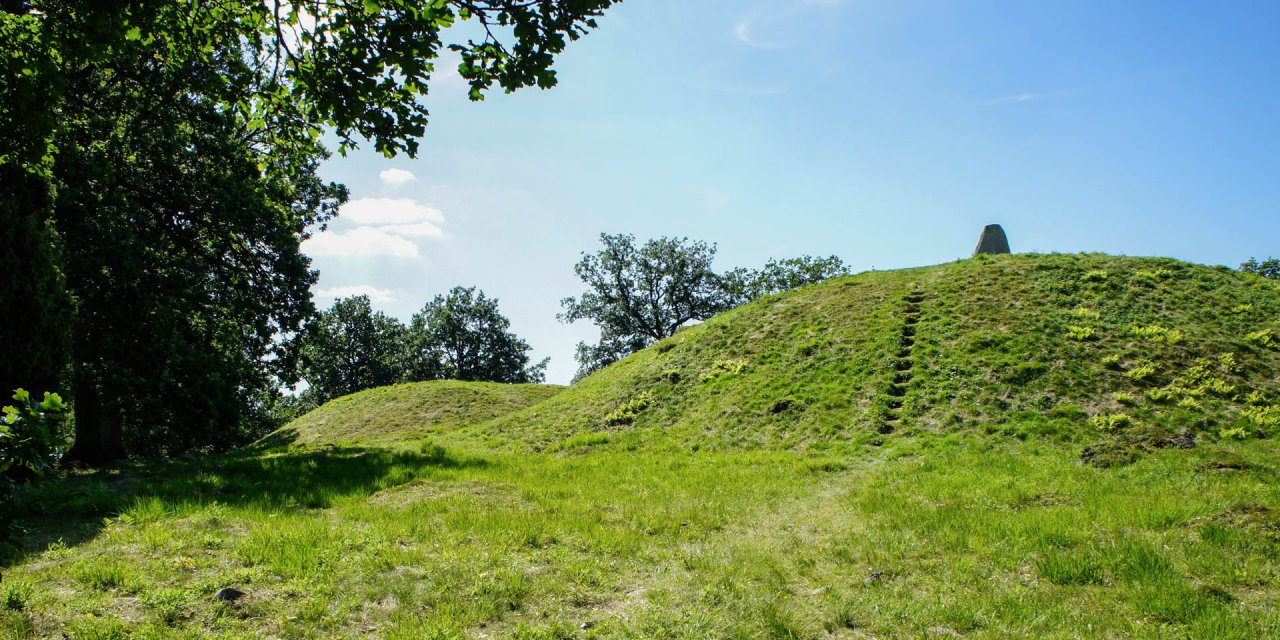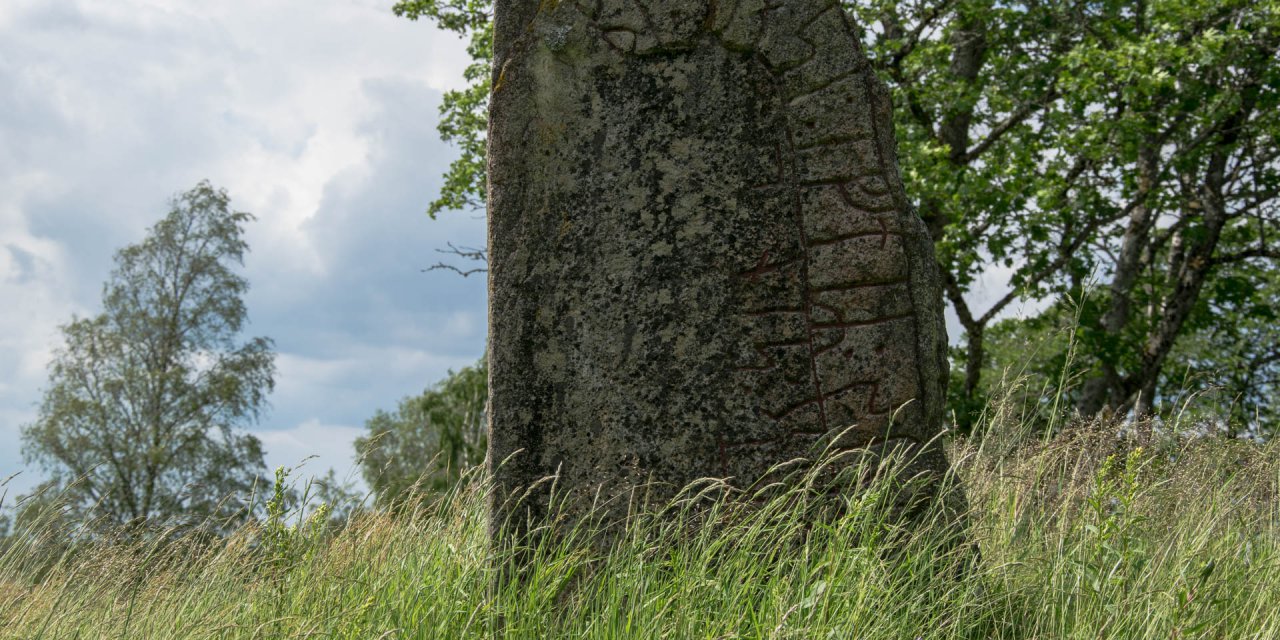

Kongshögen
Legendary burial mound in Lekaryd
The Bronze Age burial mound Kongshögen (Kings' mound), known from the Blända saga, is located within the prehistoric grave field Lekaryds Gravfält by the lake Dansjön in the northern half of the municipality of Alvesta Kommun in Småland.
Lekaryds Gravfält, dating from the Bronze and Iron Ages, is situated on the hill Ekbacken, which is covered with old oaks, on the west bank of Danjön, about halfway between Alvesta and Moheda. The burial mound Kongshögen has a diameter of 26 meters and a height of almost four meters and is clearly different from the otherwise smaller burial mounds of the site.
.The burial ground of Lekaryd
The entire burial ground covers an area of about 130x100 meters and consists of about 20 prehistoric graves. Among them there are, besides the Kongshögen, three more mounds which are partly damaged and with diameters of eight to 19 meters and heights of only up to 60 centimeters much smaller. Furthermore, the grave field consists of 14 round and one square flat stone settlements as well as a ship settlement called Kongsgraven (King's grave). It is about 8.5 meters long and five meters wide and is located only a few meters away from the passing road 126.
A further ten stone settlements had to give way to road construction in the 1960s and were previously archaeologically examined. Two so-called weapon graves were found, which are relatively rare in the province Kronobergs Län. In one of the Iron Age cremation graves the remains of an approximately 35-40 year old man and his dog as well as his combat equipment consisting of sword, knife, lance, javelin and shield were found. In the second grave were the mortal remains of a woman together with a sword, knife, spear and lance tip and a shield boss.
Kongshögen and the legend of Blända
Basically, Kongshögen is a large burial mound like many in southern Sweden. However, the King's Hill owes its fame to the Bländasaga, the most famous folk saga in Småland, whose events are said to have taken place here in the distant past. The saga was recorded by Petter Rudebeck (1660–1710), patron of the ironworks Huseby Bruk, who collected old traditions from his home region and was considered an expert in regional history. Perhaps it is thanks to this origin that the legend was regarded as a historical fact for a long time and that there were repeated attempts to prove its truthfulness.
At a time, when Småland consisted of many small kingdoms, the kingdom of Värend was located in this region. One day, Värend's King Alle went with all men fit for military service in the direction of Västergötland to help the local ruler against an attack by the Norwegians. The ruler of a neighbouring Danish kingdom – at that time Denmark still reached to the southern border of Småland – took advantage of the situation and attacked the supposedly unarmed Värend.
The Danes, however, did not expect Blända, a high-ranking woman from the judicial district Konga in today's municipality of Tingsryd. In order to put an end to the looting, raping and murdering of the Danes, she devised a perfidious plan by gathering the women of Värend in large numbers. They delivered a message to the Danish king that they wanted to marry with the conquerors, since their own men had been on the war campaign for so long and it was uncertain whether they would ever return.
The Danes accepted the tempting suggestion and arrived at the arranged time at the agreed meeting place on Bråvalla Hed, a long heath area on the west side of Dansjön. On the spot, the Danish troops found festively set tables, sumptuous meals and plenty of alcoholic drinks, only the women were not there yet – they thought. After a while, the Danes couldn't resist the temptations and started to eat and especially drink until sometime after dusk they fell asleep completely drunk.
That was the moment Blända and her comrades-in-arms had only been waiting for. They had watched the scene from their safe hiding places in the woods at the edge of the heath and now came out armed with axes and clubs and killed the sleeping Danes to the last man. They buried the Danish king and his sons in the great burial mound that has been called Kongshögen ever since. The adjoining lake Dansjön (Danes' Lake) bears its name also because of the legend, as do the names of some small villages in the area. Not to mention a bay in northern Åsnen, which is still called Blodviken (Blood Bay) because Blända's troops washed the blood of their enemies from their bodies after the complete victory.
The legendary places in fairyland
Kongshögen is one of about 40 marked places of legends in the so-called fairyland Sagobygden, which covers the areas of the municipalities Alvesta, Älmhult and Ljungby. Like here at Kongshögen, there is a red wooden showcase at each of the mystical places with the full text of the respective legend.



